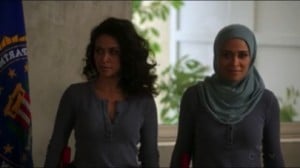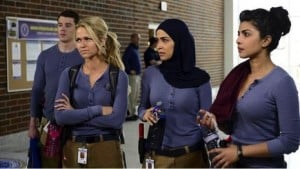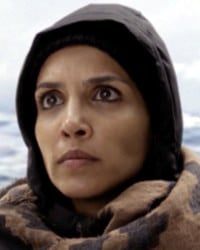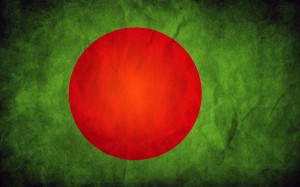This post contains some spoilers.
While I was visiting family and friends these past winter holidays, there was one sigh on everyone’s lips: Humsafar. Even as I write this, I’m taking a deep breath, feeling both exhilarated and wishful, thinking about Khirad and Asher, and their various relationship trials and tribulations. And if you’re already shaking your head in dismay, no, this is not another piece on South Asian dating traditions but rather a reference to the main protagonists of a very popular TV series taking Pakistan (and many South Asian communities abroad) by storm.
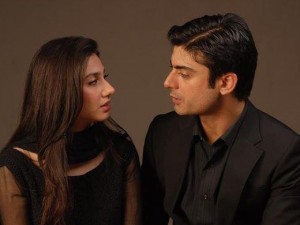
“Humsafar” translates literally to “travelling companion” and this is where English can be so limiting. In actuality, “Humsafar,” an Urdu word, conveys a perfectly nuanced reference to one’s soul mate. It alludes to a partnership, a companion or significant other that helps you face the complexities of life’s pleasures and challenges. Based on a novel by Farhat Ishtiaq and a production of Hum TV, the show tells the story of a young woman, Khirad, as she enters into an arranged marriage with the more affluent and worldly Asher. The story unfolds as the couple faces a number of challenges, both at home, as a newly married couple with expectations to succeed, and externally, from people within Asher’s upper class, social network, some of whom look down at Khirad’s purported small town naïveté. Also complicating the events is Khirad’s mother-in-law, providing the requisite foil to Khirad’s happy ending with Asher. While this story is not original, the superb acting by the leads is both compelling and engrossing. The chemistry between the main protagonists is particularly noteworthy. For the first time, as an avid TV junkie, I was able to associate the Western TV idiom of “UST” or “unresolved sexual tension” with the main leads, and fervently hoped for a happy ending.
The story develops likes a primetime soap, minus the oft exaggerated sexual exploits found in some Western TV shows. Overt romantic displays of affection are not tolerated between characters (let alone living *cough* breathing souls outside of television) and any references to such are implicit, so that romantic encounters include minimal hand holding; gentle, slowly drawn-out shoulder touches; and gazing/staring into each other’s eyes whilst a slightly melodramatic soundtrack soars to a climax. To good effect, I might add – Humsafar employs this effectively throughout the show.
Pakistani TV dramas (as they are oft referred to) usually carry some elements of prevailing socio-economic and political conditions though Humsafar does not break any social or cultural barriers – gendered roles are obvious and patriarchal undertones are prevalent. What it has successfully accomplished instead is making its characters exceedingly relatable, explaining in part the show’s popularity.
Unfortunately, however, it plays upon common stereotypes of Pakistani women. Mother- and daughter-in-law entanglements are common fodder for TV melodramas and Humsafar is no different. Its execution of this particular storyline was, in my opinion, a surprise development, with the viewers learning of the character’s evil intentions much later in the show; kudos to the director for shaking things up.
Additionally, it continues to play the woman-as-victim card, something prevalent in other TV shows that I had the opportunity to watch over winter break (I’m looking at you, Meri Zaat Zara-e-Benishan). My mother (an avid fan too) jokingly suggested that, with all the tears that Khirad has wept during the course of the show, she should be exceedingly dehydrated by now. But jokes aside, after being treated abysmally by her husband and mother, Khirad returns to Asher, seeking his support when she is unable to provide for her daughter’s medical fees. While such follow-through is consistent with religious laws and therefore expected, the show was unable to suggest circumstances whereby Khirad would have acquired financial independence – for example, as a career woman in her own right, since she’s depicted as being studious and having a fondness for mathematics, making the idea of her forging a successful career path entirely plausible.
Sara is another romantic foil to Asher and Khirad’s burgeoning romance; she is depicted as a rich, society girl with a cold heart. While Khirad speaks exclusively in Urdu, Sara peppers her conversation with English phrases and expressions; Khirad observes the hijab on several occasions while Sara wears body defining western clothes; Sara works while Khirad stays at home – the list goes on. Ultimately, the stereotypical English speaking, Western dressing and working single women in affluent circles as Godless and manipulative – not to mention shrill – is doing Pakistani women of similar backgrounds a disservice.
I watched the series finale with millions of my fellow Pakistanis this week and I can finally breathe a sigh of relief. It was a worthy ending; Asher and Khirad were united, and their precocious 4 year old Hareem was icing on the cake. While I wince through some of the less-than-accurate (read stereotypical) portrayals of women in Pakistani society on Humsafar, I leave the show immensely entertained. This speaks volumes, considering I haven’t been this enraptured by a Pakistani TV show in almost a decade. The story isn’t ideal, but if you’re looking for love triangles, deaths, jealousy, malicious mothers-in-law, bits of medical drama, exceedingly good-looking leads oozing chemistry, and all the other staples of a Pak TV drama, do give Humsafar a try.


